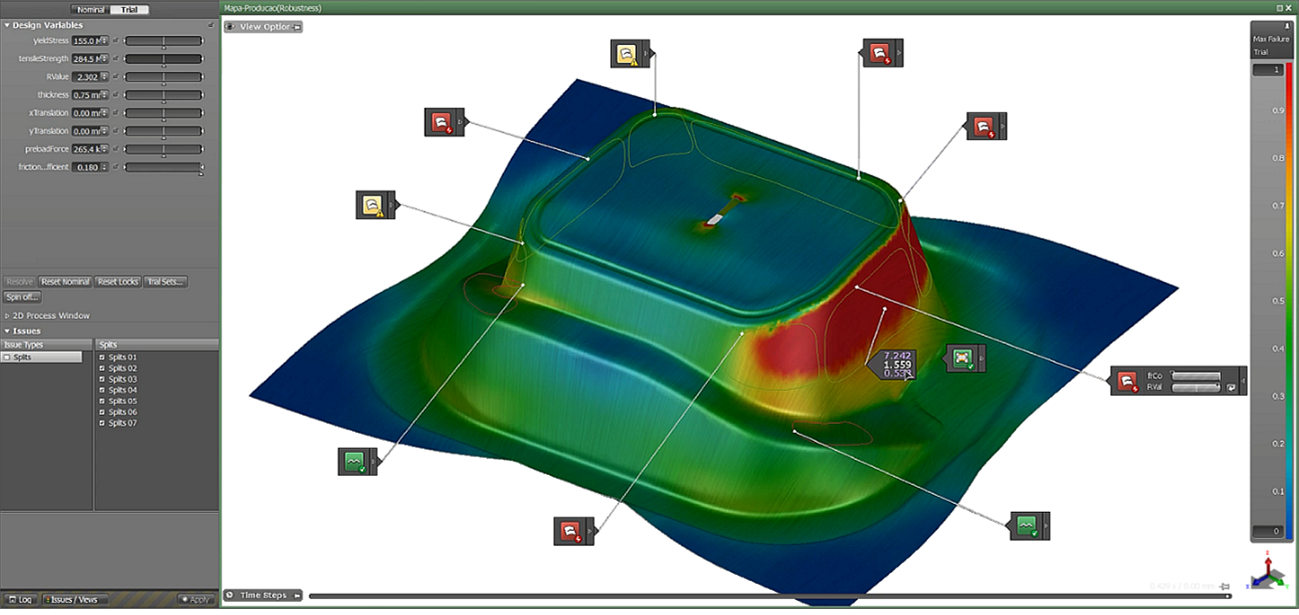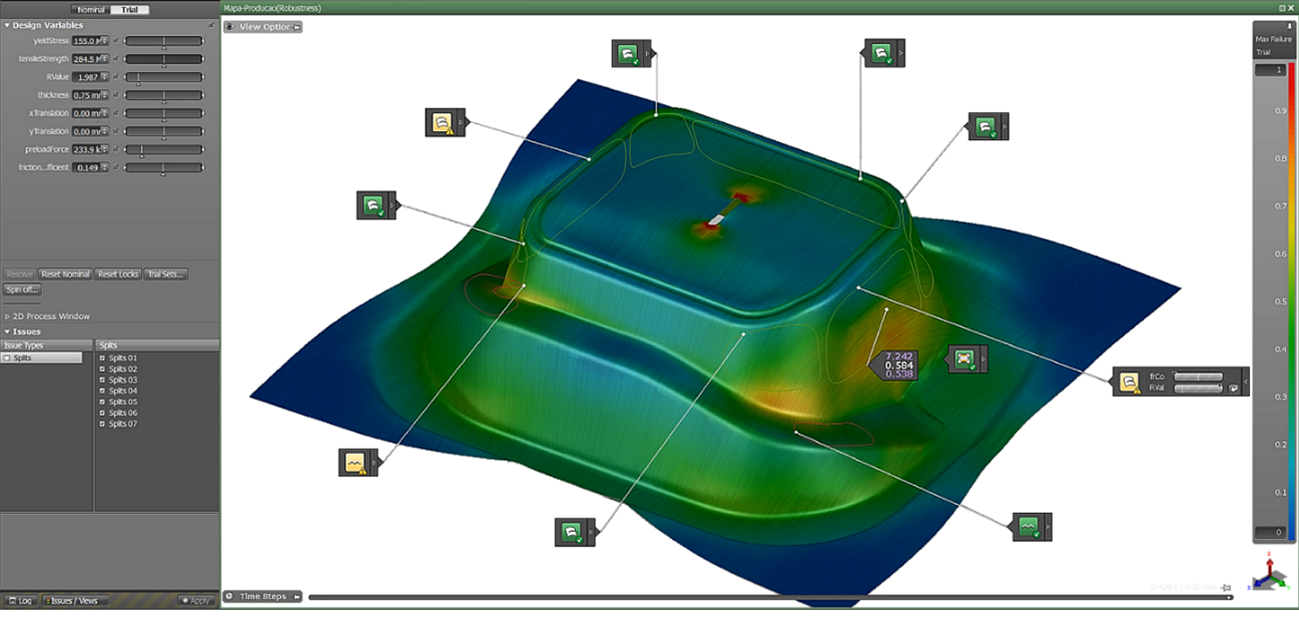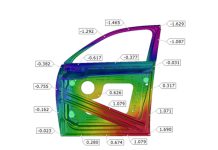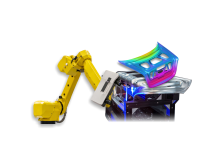This blog series is given in four parts.
See parts: One | Two | Three | Four
Welcome to the final installment of our blog series on the digital twin concept. In the previous articles, we explored the early stages of stamped parts, planning and budgeting, and the revolution in tool design and construction. Now, we explore the pivotal phases of tryout and production, where the digital twin concept takes center stage.
Discover how advanced simulation systems have transformed these processes, enabling stochastic simulations and offering powerful management tools for production lines. However, integrating departments and ensuring accurate representation of real-world conditions present challenges that require proactive management. Join us as we uncover the immense potential of the digital twin in optimizing production, improving quality, and enhancing overall productivity.
Tryout and production:
In general, the idea is that once the physical tool is built the usefulness of the Digital Twin gets to an end, because it would no longer be necessary since the “real thing” is already available and operational, and thus there is no longer any advantage in using it.
However, with the arrival of advanced simulation systems it became possible to carry out stochastic simulations, i.e., with input parameters defined as variables which can change slightly, just like reality. Thus, it became possible to include factors that are not fully controllable in the real world (the so-called “noise variables” such as sheet thickness, material properties, etc…) in the models that represent the stamping and welding processes, so that they can be used to evaluate the effect of these factors on the outcome of the processes. In this way, simulations can now be utilized to identify the root cause of production problems, as well as virtually define the necessary tuning of process parameters to eliminate them without having to use the costly trial and error process on the production line. Even more so, this allows for a type of “Virtual Buy-Off” to set an expected minimum statistical capability of a virtual process.
This advent makes it possible to use the advanced Digital Twin of the stamping and welding processes as extremely powerful tools for managing production lines, capable of providing the required information to minimize losses during manufacturing and maximize the plant’s productivity. The Figures 1A and 1B show an example of the digital twin application to solve manufacturing issues:

Fig 1A: Simulation model showing issues caused by the fluctuation of noise variables.

Fig 1B: The same model showing a tuning of the process parameters (blankholder force and blank position) that solves the encountered issues.
In this case again, the greatest obstacle to applying this technology in practice is the difficulty of integrating the several different departments that are involved in the tooling development and in the production. The Digital Twin simulation models are generally under responsibility of Manufacturing Engineering, where process and project specialists are allocated. It is up to them to generate the file that will include all the noise variables that can affect the production, as well as the process variables that can be employed to solve any problems.
Yet they need to receive complete and reliable information from the production staff about the allowable values for the noise variables and the possible variation ranges for the process parameters, in order to be able to build simulations that adequately represent the operating conditions of the production lines. In the same way, it is necessary that any eventual modifications made to the tools during their construction, tryout and operation are reported back to Manufacturing Engineering and incorporated into the models, to ensure that the Digital Twin to be employed as a production management tool is adequately representing the reality of the plant.
These are precautions that usually do not cross the minds of the department leaders, who tend to work as isolated silos, and it is again up to the higher management to ensure that the necessary integration is established and working even in the case of services provided by a third party supplier. In a best case scenario, the very tool acquisition process for the production of stamped parts and assemblies should already include the requirement that a validated stochastic simulation model (aka. Virtual Buy-off) must be handed over, which would allow its operation by using the most advanced resources made available by the Digital Twin.
Conclusion to this Four Part Series
We saw then that the evolution of the Digital Twin technology for the stamping and assembly processes of sheet metal parts has advanced very significantly in recent years, leading to the appearance of very accurate and versatile computational systems that allow to anticipate almost all issues that may arise during the development of both the parts and the tooling, ranging up to the prediction of their behavior during serial production.
However, the procedures and – why not say it – habits developed over the several decades during which tools were built and parts were manufactured before the advent of simulation systems may well become barriers to the more appropriate implementation of the advanced technologies currently available to the industry. It is then up to the higher management levels of the companies to understand the potential benefits provided by these technologies and to foster the integration of the different departments and suppliers involved, as well as the elaboration of new procedures to make the best use of all the advantages that the Digital Twin can bring to this industrial segment in terms of cost reduction, deadline minimization, quality improvement of the finished products, and productivity increase of the manufacturing lines.













